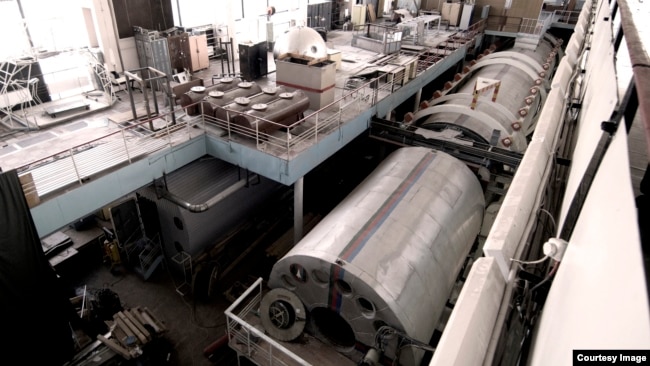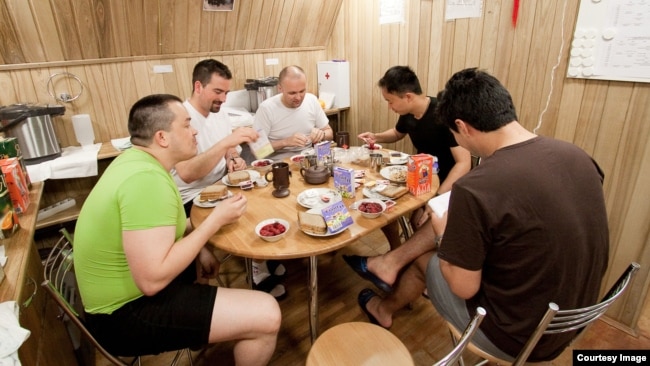月・火星での研究に向けたシュミレーション人材募集のお知らせ
またまた、宇宙関連です。
今回見つけたのは、シュミレーション研究人材志望の方への朗報です!!
もう、ワクワクが止まりません。
VOAニュースから。 お楽しみに!!!
NASA、月と火星への準備のための隔離研究のための人材を募集
NASAは、月と火星での長期滞在に備えるための実験で、8ヶ月間の隔離状態に入る候補者を募集しています。
研究者たちは、この研究の結果が、宇宙での長期滞在が人間に与える肉体的、精神的影響をよりよく理解するのに役立つだろうと述べています。
実験は、NASAの人間研究プログラムの一部です。プログラムは、"安全で生産的な人間の宇宙旅行をサポートするための最良の方法と技術 "を発見し、開発しようとしているのです。
これまでアメリカの宇宙飛行士は、国際宇宙ステーション(ISS)に長期滞在したことがあるだけでした。これらのミッションのほとんどは数ヶ月間で、最長で1年近くに及ぶものもありました。
人類研究プログラムの新しい研究は、より長い期間、より遠くへの宇宙旅行を伴うNASAの将来の探査目標に焦点を当てています。
機関は、このアルテミス計画が2024年までに人類を月に帰還させることを目指していると述べています。次に、2028年までに月に長期的な基地を確立することを計画しています。宇宙飛行士はこの基地に長期滞在して実験を行い、もしかしたらそこから月や火星へのミッションを打ち上げることができるかもしれません。
隔離研究のために、NASAはロシア科学アカデミーの生物医学問題研究所と提携していて、実験はモスクワにある同機関の研究センターで行われます。
参加に興味のある人にはいくつかの条件があります。候補者は30歳から55歳までの年齢で、英語とロシア語の両方を話す必要があります。彼らは大学の学位および/または軍事訓練または専門的な経験を必要とします。また、すべての人は健康診断や心理学的な検査に合格しなければなりません。
研究のために選ばれた人たちは、「将来の火星ミッションで宇宙飛行士が経験すると予想される環境と同じようなことを経験することになる」とNASAは声明で述べています。
6人のグループの乗組員は、科学的な研究を実施しながら密接に協力していきます。実験の中には、月や火星への将来のミッションに備えて、バーチャルリアリティやロボット操作を行うものもあるとNASAは述べています。
新しい実験は、2019年7月に終了した4ヶ月間の研究に基づいて構築されています。その研究は - 6人の国際的な乗組員を含んでます - モスクワの同じ研究センターで行われました。
2016年には、6人の科学者がハワイでの1年間の火星シミュレーションに参加しました。その研究の間、科学者たちは宇宙服を着ている間だけ、小さな実験エリアの外に出ることができました。この研究では、長期的な隔離状態でチームがどれだけうまく連携したか、また人間への心理的な影響が中心となっていました。
欧州宇宙機関は、2010年からモスクワで同様の実験を行っています。火星シミュレーション研究(Mars500として知られる)には、ロシア人3人、ヨーロッパ人2人、中国人1人の計6人のクルーが参加していました。
このような実験としては最も長く、520日に及ぶものでした。環境の一部は、実際の宇宙船と火星の輸送車をシミュレートするために構築され、520日の間に、個人には個人的な接触しかありませんでした。彼らはまた、家族や友人と通信することができましたが、実際の宇宙ミッションの間に許可されるのと同じ方法でのみでした。
要件
年齢;30歳から55歳
学歴;大学の学位・または軍事訓練/専門的な経験
語学;英語とロシア語の両方
すべての人は健康診断や心理学的な検査に合格しなければなりませんが、
これなら私も、という人多いのではないでしょうか。
前回ご紹介した宇宙飛行士ではありませんが、宇宙への貢献ができるのですから、とて魅力的ですよね。
わたしの場合は、ロシア語が。。。。。
しかし!!いまからでも遅くはありません。
学問はいくつになって初めても遅すぎるということはないのですから。
要は、チャレンジ精神!!!
Let't do our best!!!
We'll do great!!!
シュミレーション参画だけではなく、
いつか宇宙でお会いできるかもです!!!
原文
NASA is seeking candidates to go into isolation for eight months in an experiment to help prepare for long-term stays on the moon and Mars.
Researchers say results of the study will help them better understand the physical and mental effects on humans spending extended periods in space.
The experiment is part of NASA’s Human Research Program. The program seeks to discover and develop “the best methods and technologies to support safe, productive human space travel.”
Until now, American astronauts have only spent long space stays on the International Space Station - ISS. Most of these missions lasted several months, with the longest reaching nearly a year.
The Human Research Program’s new research is centering on NASA’s future exploration goals that will involve more distant space travel for longer periods.
The agency has said its Artemis program aims to return humans to the moon by 2024. Next, it plans to establish a long-term base on the moon by 2028. Astronauts could live on this base for long periods to carry out experiments and possibly launch missions from there to the moon or Mars.
For the isolation study, NASA is partnering with the Institute of Biomedical Problems of Russia’s Academy of Sciences. The experiment will take place at the organization’s research center in Moscow.
There are some requirements for individuals interested in taking part. Candidates must be between the ages of 30 and 55 years old and speak both English and Russian. They need a college degree and/or military training or professional experience. All individuals must also pass medical and psychological examinations.
Those chosen for the study “will experience environmental aspects similar to those astronauts are expected to experience on future missions to Mars,” NASA said in a statement.
Crew members in the six-person group will work closely while carrying out scientific research. Some of the experiments will involve virtual reality and performing robotic operations to prepare for future missions to the moon and Mars, NASA said.
The new experiment will build on a four-month study that ended in July 2019. That study – involving an international crew of six - took place at the same research center in Moscow.
In 2016, six scientists took part in a year-long Mars simulation in Hawaii. During that study, the scientists could only go outside their small experiment area while wearing space suits. The research centered on how well the team worked together in long-term isolation, as well as the psychological effects on humans.
The European Space Agency carried out a similar experiment in Moscow that started in 2010. The Mars simulation study – known as Mars500 - included six crew members, three Russian, two European and one Chinese.
It was the longest such experiment yet, lasting 520 days. Parts of the environment were built to simulate an actual spacecraft and Mars transportation vehicle. During the 520 days, the individuals had only personal contact with each other. They could also communicate with family and friends, but only in the same ways that would be permitted during a real space mission.
________________________________________________________________
Words in This Story
isolation – n. the state of being separate from other people, places or things
mission – n. an important task, usually involving travel somewhere
aspect – n. one part of a situation, problem, subject, etc.
virtual reality – n. a set of images and sounds produced by a computer to represent a real place or situation


